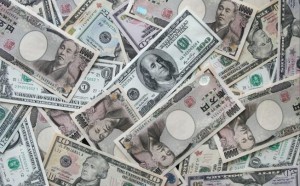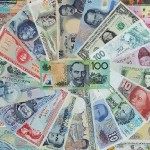 Yesterday’s trade saw USD/JPY within the range of 123.73-124.50. The pair closed at 123.89, slipping 0.31% on a daily basis, or the most considerable daily loss since July 8th, when it plunged 1.51%. The daily high has also been the highest level since June 10th, when the cross registered a daily high of 124.64.
Yesterday’s trade saw USD/JPY within the range of 123.73-124.50. The pair closed at 123.89, slipping 0.31% on a daily basis, or the most considerable daily loss since July 8th, when it plunged 1.51%. The daily high has also been the highest level since June 10th, when the cross registered a daily high of 124.64.
At 9:12 GMT today USD/JPY was down 0.12% for the day to trade at 123.74. The pair broke the daily S1 level and touched a daily low at 123.57 at 6:25 GMT. It has been the lowest level since July 15th, when the cross slid to a daily low of 123.23.
Fundamentals
United States
Sales of Existing Homes
The index of existing home sales in the United States probably gained 1.2% to a level of 5.40 million in June compared to May. If so, this would be the most considerable number of existing homes sold since August 2013, when a level of 5.48 million was reported. In May compared to April existing home sales rose 5.1% to 5.35 million units.
The sample of data for the index encompasses condos, co-ops and single-family houses. Statistical data on existing home sales is often used along with statistical figures regarding the new home sales and pending home sales, with the major objective being to draw a conclusion how the nation’s housing sector is performing, regardless of interest rates. The most active house-purchasing period in the United States is usually between the months of March through June. Therefore, in case statistical data revealed a sudden drop in the number of homes sold rather than an improvement during this period, this would be considered as a signal of weakness in the country’s housing market.
The report on existing home sales usually does not cause a real direct impact on US economy. Actually, this effect appears to be minimal, due to the fact that nothing is produced with the mere sale of an existing home. In terms of economic activity, the sale of an existing house may be related only to interior design and purchases of new furniture.
The reason why markets pay a certain attention to existing home sales report is that it reveals much about the general course of the nation’s economy. A major part of the population considers a house as a sign of wealth and, unlike the money wealth, which is concentrated in certain regions of the country and held by the wealthiest representatives of the population, ”housing wealth” is evenly distributed across the country.
In case the index increased more than anticipated, this would have a limited bullish effect on the US dollar. The National Association of Realtors (NAR) is to release the official figure at 14:00 GMT.
Japan
Balance of Trade
Japan’s merchandise trade balance probably produced a surplus at the amount of JPY 5.40 billion during June, according to the median forecast by experts, following a deficit of JPY 216.00 billion, registered in May. The latter has been the most considerable deficit since February, when a figure of JPY 424.6 billion was reported. Total exports rose at an annualized rate of 2.4% to JPY 5.740 trillion in May, which has been the smallest gain in nine months despite the weaker yen. Shipments to Asia, which account for over half of Japan’s overall exports, expanded 3.3%. Within this category, the largest increases in exports were reported for Taiwan (9.5%), Hong Kong (8.0%), the United States (7.4%), China (1.1%). Total imports fell at an annualized rate of 8.7% to reach JPY 5.956 trillion in May, or the fifth consecutive period of decline. Inward shipments of mineral fuels, which account for almost 33% of the nation’s total imports, shrank 33.1% year-on-year in May. In addition, import of petroleum went down 31.7% year-on-year.
During the period 1970-2010 Japan has had regular annual trade surpluses. Since 2011, on the other hand, the country has been recording trade deficits, because yen depreciation led to higher costs of imports, while increased purchases of fossil fuels and gas were aimed to neutralize the loss of nuclear power after the devastating earthquake and the tsunami in March 2011.
The merchandise trade balance, as an indicator, measures the difference in value between the country’s exported and imported goods during the reported period. A positive balance signifies a trade surplus and a negative balance signifies a trade deficit. The balance of trade reflects the net export of goods, or one of the components to form the country’s Gross Domestic Product. Generally, exports reflect economic growth, while imports indicate domestic demand. In case a larger-than-expected surplus is reported, this will usually provide support to the yen. The Ministry of Finance will release the official trade data at 23:50 GMT.
Bond Yield Spread
The yield on Japanese 2-year government bonds went as high as 0.013% on July 21st, or the highest level since July 16th (0.013%), after which it slid to 0.009% at the close to lose 0.001 percentage point compared to July 17th.
The yield on US 2-year government bonds climbed as high as 0.714% on July 21st, or the highest level since July 2nd (0.716%), after which it fell to 0.686% at the close to lose 2.4 basis points (0.024 percentage point) for the day.
The spread between 2-year US and 2-year Japanese bond yields, which reflects the flow of funds in a short term, widened to 0.677% on July 21st from 0.659% on July 17th. The July 21st spread has been the most notable one since July 1st, when the difference was 0.687%.
Meanwhile, the yield on Japan’s 10-year government bonds soared as high as 0.431% on July 21st, after which it slid to 0.427% at the close to dip 1.8 basis points (0.018 percentage point) compared to July 17th. It has been the third consecutive drop.
The yield on US 10-year government bonds climbed as high as 2.403% on July 21st, or the highest level since July 15th (2.432%), after which it slipped to 2.331% at the close to lose 4.9 basis points (0.049 percentage point) on a daily basis.
The spread between 10-year US and 10-year Japanese bond yields expanded to 1.904% on July 21st from 1.902% on July 17th. The July 21st yield difference has been the highest one since July 16th, when the spread was 1.904%.
Pivot Points
According to Binary Tribune’s daily analysis, the central pivot point for the pair is at 124.04. In case USD/JPY manages to breach the first resistance level at 124.35, it will probably continue up to test 124.81. In case the second key resistance is broken, the pair will probably attempt to advance to 125.12.
If USD/JPY manages to breach the first key support at 123.58, it will probably continue to slide and test 123.27. With this second key support broken, the movement to the downside will probably continue to 122.81.
The mid-Pivot levels for today are as follows: M1 – 123.04, M2 – 123.43, M3 – 123.81, M4 – 124.20, M5 – 124.58, M6 – 124.97.
In weekly terms, the central pivot point is at 123.44. The three key resistance levels are as follows: R1 – 124.87, R2 – 125.67, R3 – 127.10. The three key support levels are: S1 – 122.64, S2 – 121.21, S3 – 120.41.





